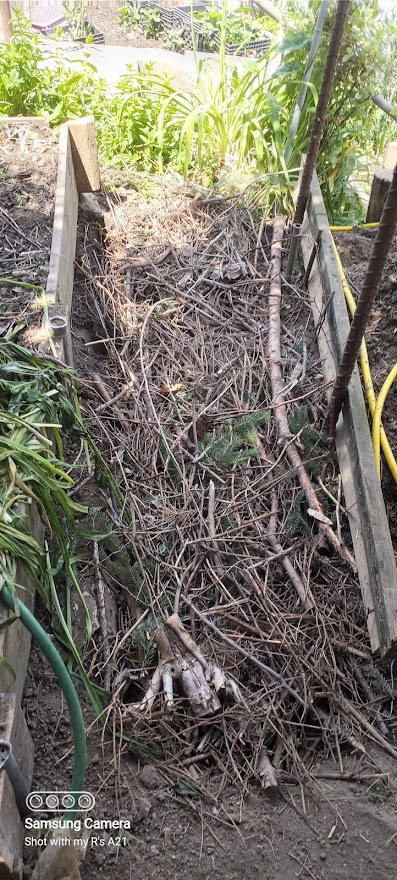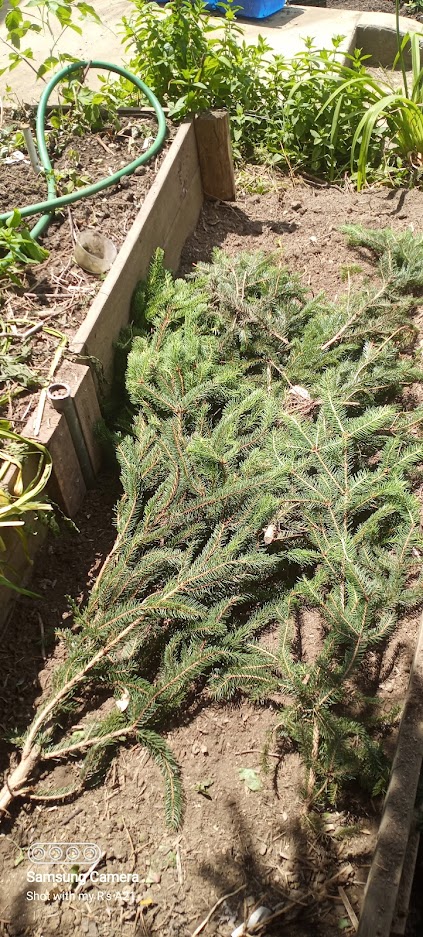
 7
7




 5
5




"The future is something which everyone reaches at the rate of sixty minutes an hour, whatever he does, whoever he is." C.S. Lewis
"When the whole world is running towards a cliff, he who is running in the opposite direction appears to have lost his mind." C.S. Lewis
 1
1




 6
6




William Bronson wrote: The second reason is capturing surface runoff water, which I have a surprising amount of.
Even if its saturated from previous rains, charcoal is still an agragate, so it could facilitate infiltration.
Each stretch of pathway would be an infiltration basin.
Visit Redhawk's soil series: https://permies.com/wiki/redhawk-soil
How permies.com works: https://permies.com/wiki/34193/permies-works-links-threads
 1
1




Nails are sold by the pound, that makes sense.
Soluna Garden Farm -- Flower CSA -- plants, and cut flowers at our Boston Public Market location, Boston, Massachusetts.

 1
1




How Permies works: https://permies.com/wiki/34193/permies-works-links-threads
My projects on Skye: The tree field, Growing and landracing, perennial polycultures, "Don't dream it - be it! "
 3
3




 2
2




Fish heads fish heads roly poly fish heads
 3
3




Visit Redhawk's soil series: https://permies.com/wiki/redhawk-soil
How permies.com works: https://permies.com/wiki/34193/permies-works-links-threads
 3
3




Dan Fish wrote:Nah I can't say I like the idea. I feel like the charcoal will crush into dust and blow away all day long, causing all kinds of mess and a need to place a lot of charcoal to cover even short paths. Also, you know how they say wear a mask when crushing charcoal up for biochar? Although it's probably a miniscule amount you will be breathing in while "slow-crushing" it, it's still a 100% avoidable amount.
I get the idea to save costs but it's gotta be more work to create the char than it is to earn $30 to buy a yard of rock.
I love biochar, I just don't see any upside here. Of course, I have no idea what I am talking about, so prove me wrong!
A build too cool to miss:Mike's GreenhouseA great example:Joseph's Garden
All the soil info you'll ever need:
Redhawk's excellent soil-building series





 7
7




Check out Redhawk's soil series: https://permies.com/wiki/redhawk-soil







 7
7




 4
4




 6
6






 7
7




 2
2




Check out Redhawk's soil series: https://permies.com/wiki/redhawk-soil
 4
4




John Suavecito wrote:This looks good, Tony, but I don't see why biochar couldn't be incorporated into the mix, preferably below surface level.
John S
PDX OR
 2
2





|
Scaramouche. Scaramouche. A tiny ad dressed as a clown.
Free Seed Starting ebook!
https://permies.com/t/274152/Orta-Guide-Seed-Starting-Free
|


